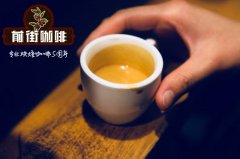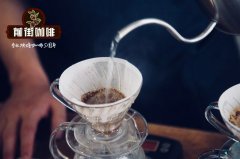Palm trees and Big Bird Manor anaerobic fermentation Palm trees and Big Bird Manor are delicious?

Professional coffee knowledge exchange more coffee bean information please follow the coffee workshop (Wechat official account cafe_style)
La Palma & El Tucan is a farm, mill, and coffee tourist destination hidden in Zipacon, Cundinamarca Hills. The name of the farm indicates the core idea of their operation: symbiosis, that is, action is mutually beneficial. Palm trees, like giant beaked birds, exist in a balanced relationship in their habitat, the La Palma & El Tucan method innovates its treatment along the supply chain through sustainable coffee production ecosystems, and invites everyone to visit the farm and see all their own coffee production environments.
On farms, the intersection between coffee farming and sustainable tourism is obvious. Open-air cafes and cabins in the forest encourage visitors to consider the continuity between coffee production and consumption space. Vegetable gardens, compost production, biochar production, water filtration, fertilization methods for coffee trees, shade tree species, and the overall biodiversity of farm animal and plant life are all indicators that reflect the principle of permanent agriculture in practice.
The plot is part of Estate & Varietals collection of La Palma & El Tucan and represents the best coffee on the farm.
The geisha breed is famous for its explosive taste and sweetness. The first collection was in Ethiopia in the 1930s. From there, it migrated to Costa Rica, Panama and South America.
In 2012, geisha species were first planted in La Palma & El Tucan. At present, there are 10332 species of plants in five public science libraries. These plots are located between 1650 and 1.800 meters above sea level. The temperature of the farm is between 9 °C and 27 °C, with an average annual precipitation of 1300 ml.
The coffee is processed by lactic acid fermentation, which is classified as "anaerobic" because the interaction between oxygen and coffee cherries is minimal. As soon as the cherries arrive at the factory, they are hand-sorted and placed in sealed containers. In the absence of oxygen, bacteria feed on carbohydrates in mucus, which helps to increase the concentration of lactic acid, thus forming a unique cup shape.
END
Important Notice :
前街咖啡 FrontStreet Coffee has moved to new addredd:
FrontStreet Coffee Address: 315,Donghua East Road,GuangZhou
Tel:020 38364473
- Prev

What does toh Coffee TOH Coffee mean? TOH Coffee Competition
Professional coffee knowledge exchange more coffee bean information please follow the coffee workshop (Wechat official account cafe_style) Taste of the Harvest for example, the winning Cup competition in Africa is in full swing. In mid-January, the Uganda and Democratic Republic of the Congo projects were selected in Kampala, Uganda, and we were invited to join the jury to help select the most delicious projects.
- Next

Colombian Palm Tree Bird Manor Rose Summer Sun Palm Tree Bird Manor Coffee producing area
Professional Coffee knowledge Exchange more information about coffee beans Please follow the coffee workshop (official Wechat account cafe_style) Coffee has been an integral part of the economic development of the province of Candy Yamaka for more than a century. Coffee in the region is not just a crop; it is part of the social and cultural fabric of the region. Cundiamarca's coffee grows in the East Andes of Colombia.
Related
- Beginners will see the "Coffee pull flower" guide!
- What is the difference between ice blog purified milk and ordinary milk coffee?
- Why is the Philippines the largest producer of crops in Liberia?
- For coffee extraction, should the fine powder be retained?
- How does extracted espresso fill pressed powder? How much strength does it take to press the powder?
- How to make jasmine cold extract coffee? Is the jasmine + latte good?
- Will this little toy really make the coffee taste better? How does Lily Drip affect coffee extraction?
- Will the action of slapping the filter cup also affect coffee extraction?
- What's the difference between powder-to-water ratio and powder-to-liquid ratio?
- What is the Ethiopian local species? What does it have to do with Heirloom native species?

